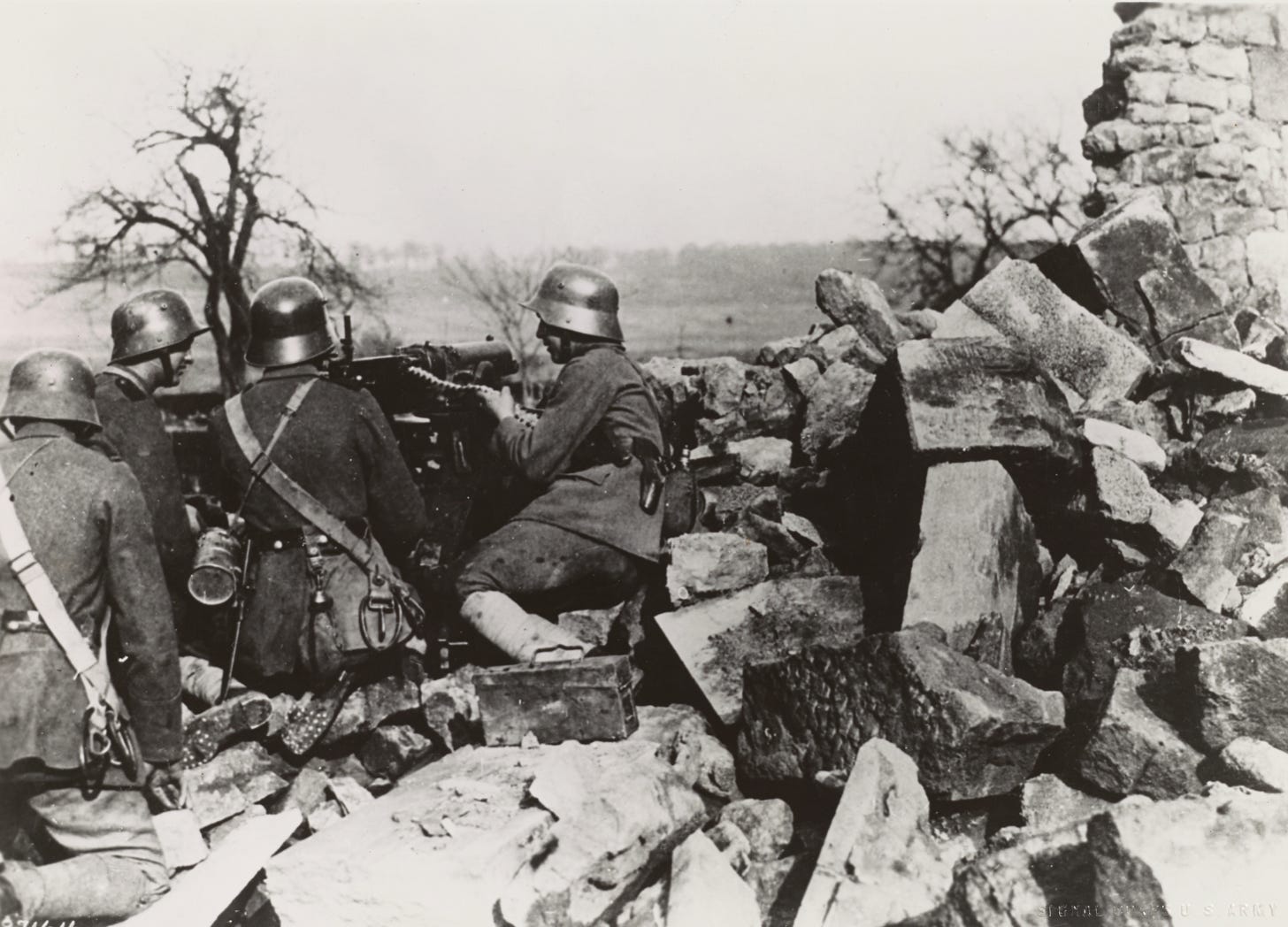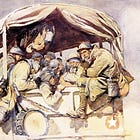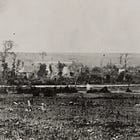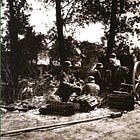Harmonizing Heavy Weapons
A report from the spring of 1918
On 10 July 1918, the General Headquarters of the American Expeditionary Forces in France published a pamphlet that, after describing three recent engagements, tried to identify the common features of the tactics employed. This post, the last in a series of four, provides a verbatim copy of this analysis, which comes close to grokking the ‘love the one you’re with’ approach to low-level cooperation that played such a big role in storm troop tactics.
Much other interesting information was secured from Company officers, but all of it points directly to well known principles of open warfare which have long been taught in our services. I mean such matters as personal reconnaissance of officers; vigorous patrolling by both day and night well in advance; flank security; combat liaison; skillful use of cover; avoiding well-marked map features; and, above all, the necessity for fire superiority. The real lessons learned from these incidents seems to be the perfect team play between light machine guns, heavy machine guns, minnenwerfers and field guns, which, apparently, follow attacking battalions and fight in close liaison with the first line.
I was unable to discover to any degree of satisfaction the method of bringing up the heavy machine guns. In one case, the heavy gun and ammunition was brought up on a stretcher covered with a blanket and carried by four Germans wearing Red Cross brassards. In another case a peasant, apparently, pushing a wheelbarrow entered a small wood from which very shortly thereafter came machine gun fire. Others were brought up by horsepower - using sleds - which was replaced by man power as became necessary.
So far as I could learn, in the severe open fighting, liaison between the front line and higher commands practically reverted to the use of runners. In many cases, the location of the higher headquarters was not known, and many runners were lost and many were killed, which resulted in very serious confusion. The failure to know exactly where battalion, brigade, and Division headquarters were greatly contributed to the confusion. The lack of reserves to occupy covering positions to enable units severely handled to reform and reorganize contributed very largely to the failure to stop the German drive. The stopping power of machine gun nests, come come upon unexpectedly, and when not skillfully out-maneuvered, as in instances mentioned above, was most notable.
PS: No one seems to know the system used by the Germans in communicating from the firing line to Battalion Headquarters. Rockets and grenade signals were observed as various times but the occasions when used seemed to indicate that lines of the least resistance were being communicated. The very considerable use of large scale maps, some being found on privates, may account for prompt and accurate locations of the enemy in view of the German’s thorough knowledge of the rather stereotyped tactics of the British.
Source: General Headquarters, American Expeditionary Forces ‘Extract: Report of American Officer on Recent Fighting’ (10 July 1918), US National Archives (Archives II), Record Group 127 (Records of the US Marine Corps), Records Relating to US Participation in the World Wars (1916-1945), Box 6 (27 May - 9 July 1918)
Acknowledgement: I would like to thank Michael Miller, late of the archives of the Marine Corps University, for giving me a copy of this document.
Source for Photo: US National Archives
For Further Reading:
To Subscribe, Support, or Share:









Perhaps… “failure to know exactly where battalion, brigade, and Division headquarters were greatly contributed to the confusion”
Perhaps the 62d army HQ at Stalingrad being across the Western river and within 1km or less of the front line trace contributed to their holding the line.
There’s nothing that says communications can’t be parallel along with command to the front trace, and if seen much easier to find.
We’re going to run into this problem because we became not just a colonial army but sort of a Raj NGO, and very bureaucratic once the war of movement stopped and the war of Public Relations began.
Nothing is essential to a command post except the Commander and Communications.
The 3ID Commander’s CP in the 2003 push to Baghdad was his HUMMV, a map and radio in his hand.
I mean essential to fighting, not the vast multiplicity of reports essential to rear echelon career relevance.
Swish! Thanks for sharing.